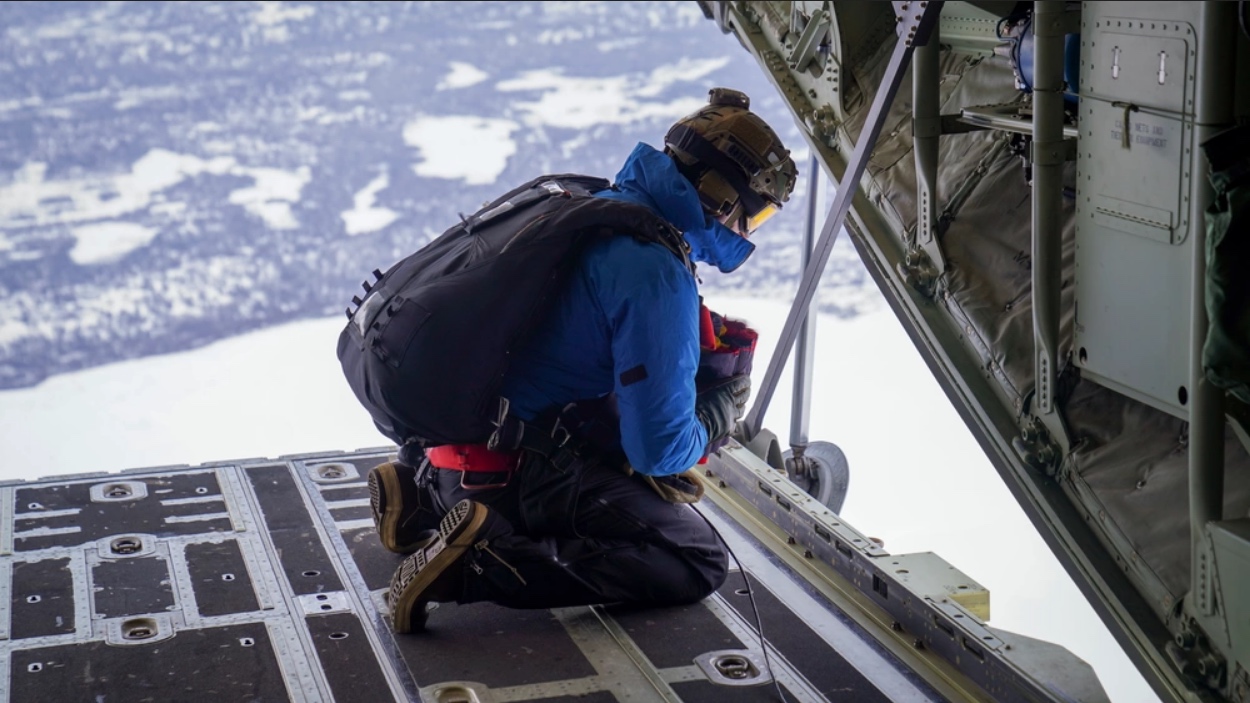

Five rescue missions in a long weekend with a frantic pace of calls for help in backcountry terrain is a lot even by the standards of the often-busy Alaska Air National Guard rescue teams. This Labor Day weekend was hectic. Members of the Alaska Air National Guard’s 212 Rescue Squadron carried out complicated pararescue jumps in remote parts of the state to rescue stranded and hurt hikers and plane crash survivors. At one point, the same team jumped twice in less than a day to rescue two separate survivors of plane crashes.
The Alaska Air National Guard’s busy week started on Aug. 30 with reports of two plane crashes at roughly the same time. The first was in Skwentna, northwest of Anchorage, the other more than 200 miles northeast at Tok, Alaska. The 176th Wing of the Alaska Air National Guard sent a HC-130 plane from the 211 Rescue Squadron as well as two 210th Rescue Squadron HH-60G Pave Hawk helicopters and members of the 212th, known as the Guardian Angels, with them. One of the HH-160Gs, on its way back from Eielson Air Force Base, went to the Swetna crash site. The pilot was luckily uninjured and retrieved by the helicopter crew.
The rest of the dispatched Guardsmen went to Tok. Another plane crash, this one involving a Cessna 150, crash left two people critically injured and trapped inside the aircraft. The HC-130 passed overhead and members of the 212th jumped out, parachuting to the ground and freeing the survivors from the plane. They provided emergency medical care and then the HH-160G flew in, hoisting the survivors up from the crash site before flying them to medical centers.
“The patient’s extent of injuries versus the time and distance required to reach them, drives our tactics to respond,” combat rescue officer Maj. Dan Warren, who led the team that jumped to the plane crash, said in an Air National Guard release. “Parachuting is simply another means to expedite our access to patient care, which is why we train on it weekly.”
According to Warren, the rescue teams were jumping and providing medical care in less than an hour after taking off from Joint Base Elmendorf-Richardson.
Warren and that same team were back in an HC-130 and jumping out of it less than 24 hours later. Another plane had crashed, this time near McGrath, roughly 150 miles northwest of Anchorage. Warren’s team, carried on the same HC-130 and HH-60G as the Aug. 30th mission, jumped to the top of a 2,500-foot-tall ridge. The pilot was found dead. The Air National Guard helicopter picked up the Guardian Angels team and the body of the deceased man. According to Alaska public media station KYUK, the pilot is an Anchorage resident and the crash is under investigation. The HH-60G then was sent to pick up a lost hiker while on its way back to base.
Subscribe to Task & Purpose Today. Get the latest military news and culture in your inbox daily.
The missions were some of several rescue operations that the 176th Wing carried out over a five-day period including Labor Day Weekend. On Sept. 1-2, members of the Guardian Angels and the 210th Rescue Squadron rescued more hikers who were stranded in Denali National Park.
The remote nature of many of Alaska’s settlements, and the rough conditions that far north, means that planes are often used to travel between places. And when there are crashes, or people are stranded or lost, the Air National Guard is often called in to do rescue and recovery missions.
The latest on Task & Purpose
- Hawaii soldier earns rare triple tab: Ranger, Sapper, Jungle
- ‘I want to be an infantryman,’ says man who joined the Army at 39
- New Tinker Air Force Base motto immediately lampooned by airmen, veterans
- Army Chinook takes flight with ‘FUKIRAN’ call sign
- Navy fires captain of USS John S. McCain for “loss of confidence”
